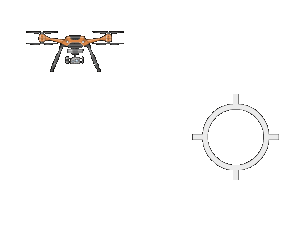Improvised explosive devices are common practice for terrorists in conflict zones worldwide. While the challenge of blocking the threat becomes more complicated, the electronic warfare industry keeps innovating its methods, perfecting jamming abilities to create an optimal virtual protective dome
One of the most significant threats in non-state warfare are improvised explosive devices (IEDs) activated remotely via wireless devices such as cellular, Wi-Fi, or other radio frequency (RF) devices. In contrast to standardized means of war, almost any simple operating mechanism like a car key, a walkie-talkie, or a mobile phone can be used by terrorists to carry out life-threatening actions, which claim thousands of victims every year in conflict zones around the world.
In order to deal with this dangerous threat of remotely detonating explosive devices, electronic warfare (EW) defence companies are trying to gain control of the spectrum – and overpower RF signals in order to block the ability to detonate explosive devices.
Over the years, this field of EW has developed rapidly; what started with only active jamming has become more sophisticated and effective – enabling upgraded protection for forces operating in territories under dispute and war.
A dome of protection against hostile elements
Frequency jamming enables a virtual “protective dome” in the range in which it operates, blocking the possibility of activating remote-controlled improvised explosive devices (RC-IEDs) via wireless communications that hostile parties could use.
The jamming radius of different wireless devices, cellular, satellites, Wi-Fi communication and other radio frequencies, depends on the signal strength, the technology, the frequency, the distance from the object and other parameters such as the environment topography.
In the past, most threats were focused on frequencies of between 20 MHz and 3 GHz, but in the last decade, they have reached frequencies of 6 GHz and in recent years, even 8 GHz. Therefore, the means of blocking must be constantly refined and operate at all threatening ranges, making sure they provide effective jamming at all times.
The basic way – Active Jamming
Active jamming is the primary method of blocking frequencies because it works continuously without needing to identify the threat’s source. This method “shoots in all directions” and allows constant protection of the frequencies for which it was configurated for.
Active jamming is ideal for blocking low-power threats or when the frequency is known in advance; however, due to limited energy level the ability to deal with high-power threats decreases as the frequency range defined for it is broader. Therefore, if we do not have prior knowledge of the source of the threat and the energy levels required to block it, there will be a decrease in the protected range.
When there is prior knowledge, and the threat is known in advance, different power levels can be set in each sub-band, increasing protection ability.
Reactive jamming – Utilizes Gaps in Transmission
Unlike active jamming, reactive jamming is based on very short gaps (look-throughs) between transmissions allowing the detection of threats to jam. This way, the system is triggered only as a response to an activated threat and the energy is directed and pinpointed with the exact intensity needed to block the specific threat – preventing its consequences.
When the forces are equipped with reactive jamming devices, several powerful threats can be dealt with simultaneously and quickly. Because of the high power of the blocking signal – it is an ideal defence against near-distance and high-power IED threats.
Hybrid Jamming – Advantages of both worlds
Today’s preferred way of optimal defensive jamming combines active and reactive methods enabling protection that includes the advantages of both worlds. Hybrid jamming devices do not have short-range limitations, it protects all potential frequencies simultaneously and activate powerful blocking when there is a real threat in the field.
Products with a hybrid jamming scheme can be installed on vehicles as well as on backpacks or rapid deployment devices. They enable protection against remote control IEDs and make it possible to create a safe zone for operational activity while protecting human lives and thwarting terrorist attacks in prone territories.
Information makes it easier
As the electronic warfare industry develops – it has greater and more focused capabilities. For example, innovative devices can block the activation of explosive devices, but will allow communication between the forces in the field – a crucial ability for any army.
It is essential to remember that while EW industry is getting more capable, intelligence plays an important role in the ability to protect against IEDs. When there is valuable intelligence information on the estimated threat, blocking it with greater power is easier and more effective, while keeping other frequency channels open to benefit the troops.




